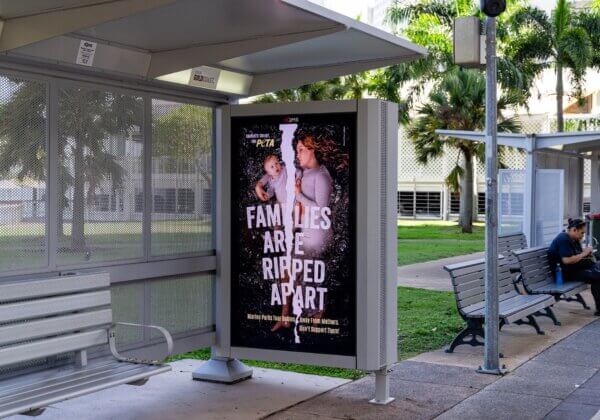Here’s Why Captivity Won’t Save Rhinos #WorldRhinoDay
The misguided Australian Rhino Project is still planning to establish a breeding herd of rhinos in Australia. Apparently, the first rhinos have been identified and the process for gaining approvals is “well progressed”.
Originally, The Australian Rhino Project was planning to sedate rhinoceroses, to then place them in crates for a 14-hour flight from South Africa to Australia. They have found that biosecurity laws, however, now require importing the animals indirectly via a third country. This means that these poor animals will have to spend another 12 MONTHS in quarantine in order to meet Australia’s import conditions.
Rhinoceroses are social animals, so severing their bonds with other animals by plucking individuals out of their herds as if they were pawns to be moved around at will is cruel and unnecessary. There is no assurance that these uprooted animals will breed, as project organisers hope – or even that they will survive.
The animals, who will undoubtedly be confused and traumatised as a result of being TWICE wrenched away from everything familiar to them, ultimately end up being used for entertainment in Australian zoos.
PREVIOUS RHINO DEATHS IN AUSTRALIA
Several years ago, four white rhinoceroses, including a mother and her calf, died suddenly at the Taronga Western Plains Zoo. In 2007, a greater one-horned rhinoceros who came from the US as part of an international breeding programme died at the same zoo after ingesting 70 litres of sand, which blocked her intestinal tract.
IS CAPTIVITY THE SAME AS CONSERVATION?
Even if captive-bred rhinoceroses could be reintroduced in Africa, they would likely stand little chance against competition from existing herds, starvation and unfamiliar predators.
Instead of kidnapping these animals and destroying their families, people who care should put time and resources into protecting them in their native habitat. The money that the Rhino Project wants to raise to relocate rhinoceroses could make a real, lasting difference if it were directed where the money is really needed.
Solution One: Tackle Poaching
Poaching in South Africa increased 9,000 per cent from 2007 to 2014, from 13 rhinoceroses to a record 1,215.
An estimated 20,000 white and 5,000 black rhinoceroses remain. Shipping a few of them to Australia will not eradicate poaching. Funds could be better spent on tackling the issue of poaching and on increasing anti-poaching surveillance.
Uprooting individual rhinoceroses and flying them halfway around the globe will not save their species. The solution is to protect them in their natural habitat.
Solution Two: Education
Rhinoceros horns fetch more than $77,000 per kilogram on the black market as purported treatments for various maladies – despite multiple studies showing that they have no medicinal value.
By dispelling any mistaken belief on the part of buyers that horns are obtained legally, an education campaign would reduce demand – as would a campaign pointing out that there is nothing “magical” about rhinoceros horns, which are made primarily of a substance similar to keratin, the protein in hair and fingernails.

AUSTRALIAN ANIMALS FACING EXTINCTION ALSO NEED OUR HELP
Let’s not forget that there are also many other endangered species right here in Australia who could be helped with a fraction of rhino relocation costs. The banded hare, bridled nail-tail wallaby, central rock rat, Shark Bay mouse, Tasmanian forester kangaroo, orange-bellied and turquoise parakeets, short-necked turtle and speartooth shark are among the dozens of species that could be lost forever – and with them, part of what makes Australia so special.
Please also share this information with your family and friends, and encourage them to take action, too!







